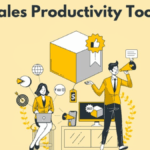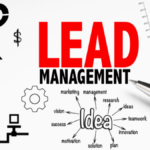In today’s digital-driven marketplace, businesses must operate smarter and faster to stay ahead. One of the most powerful ways to do that is by automating the sales funnel. Sales funnel automation helps companies streamline their sales processes, nurture leads efficiently, and convert prospects with minimal manual effort.
This article explores what sales funnel automation is, why it’s important, how to implement it effectively, and the tools you need to optimize your funnel from top to bottom.
What Is a Sales Funnel?
A sales funnel represents the journey a potential customer takes from the first interaction with your brand to making a purchase. It typically includes the following stages:
- Awareness: The lead discovers your brand.
- Interest: They show interest in your product or service.
- Decision: They consider making a purchase.
- Action: They complete the purchase.
Each stage requires different strategies to engage and move the lead forward. Sales funnel automation allows businesses to automate these strategies for improved efficiency and results.
Why Sales Funnel Automation Matters
Enhanced Efficiency
Manual follow-ups, lead sorting, and email campaigns consume time. Automation replaces repetitive tasks, allowing your team to focus on strategy and relationship-building.
Consistency in Communication
Automation ensures that each lead receives consistent messages tailored to their stage in the funnel. It eliminates human error and increases brand trust.
Better Lead Nurturing
With automation, you can send timely content, track user behavior, and deliver personalized experiences that push leads down the funnel faster.
Increased Revenue
Automation boosts conversion rates by keeping leads engaged, reducing drop-offs, and closing sales more effectively.
Key Components of an Automated Sales Funnel
Lead Generation
Automated systems can collect leads from various sources—landing pages, social media, webinars—and add them directly to your funnel.
Email Marketing Automation
You can set up drip campaigns to send targeted messages based on behavior (downloads, clicks, page views, etc.).
CRM Integration
A Customer Relationship Management (CRM) tool automatically logs interactions, segments leads, and helps your sales team prioritize prospects.
Lead Scoring
Automation tools can assign scores to leads based on actions taken, helping you focus on high-quality leads.
Analytics and Reporting
Automated systems provide insights into what’s working and what needs improvement.
Steps to Automate Your Sales Funnel
Step 1: Map Out Your Sales Funnel
Before automating, you must understand your sales process. Identify the key stages and the actions leads take at each point.
Step 2: Choose the Right Automation Tools
Select a platform that matches your business needs. Popular options include:
- HubSpot
- ActiveCampaign
- ClickFunnels
- Mailchimp
- Keap (Infusionsoft)
Step 3: Create Valuable Lead Magnets
Use lead magnets like eBooks, webinars, or discount offers to capture interest and gather contact information automatically.
Step 4: Set Up Automated Email Sequences
Design email workflows for every stage of the funnel—welcome emails, product demos, FAQs, and follow-ups.
Step 5: Implement Lead Scoring and Segmentation
Use behavioral data (clicks, downloads, visits) to assign scores and group leads based on interest levels.
Step 6: Personalize the Journey
With tools like dynamic content and conditional logic, you can tailor messages based on lead preferences or actions.
Step 7: Track, Analyze, and Optimize
Use built-in analytics to monitor funnel performance. Test subject lines, CTA buttons, and content for better results.
How Automation Works at Each Funnel Stage
Top of Funnel (ToFu) – Awareness
- Automation Tools: Landing pages, social media schedulers, SEO tools.
- Activities: Attracting traffic through blog posts, ads, or videos.
- Automation Examples:
- Auto-scheduling social media posts.
- Pop-ups offering free guides in exchange for email addresses.
Middle of Funnel (MoFu) – Interest & Consideration
- Automation Tools: Email marketing platforms, CRMs.
- Activities: Educating leads, offering value, qualifying prospects.
- Automation Examples:
- Sending educational email series.
- Assigning lead scores based on content interaction.
Bottom of Funnel (BoFu) – Decision & Purchase
- Automation Tools: E-commerce integrations, SMS marketing.
- Activities: Offering discounts, product demos, free trials.
- Automation Examples:
- Sending reminders for abandoned carts.
- Triggering offers for leads who visit pricing pages.
Best Practices for Sales Funnel Automation
Keep the Customer Journey in Mind
Don’t over-automate or make it robotic. Keep personalization and empathy central to your strategy.
Monitor and Tweak Regularly
Automation isn’t “set it and forget it.” Regularly assess performance and improve touchpoints.
Use A/B Testing
Test subject lines, email formats, CTAs, and timing to discover what works best.
Maintain Clean Data
Outdated or duplicate contact information can derail your efforts. Regularly clean your CRM.
Align Sales and Marketing
Ensure both teams understand and contribute to the funnel strategy to avoid gaps or conflicts.
Tools to Power Your Sales Funnel Automation
1. HubSpot
All-in-one CRM with powerful workflow automation, landing pages, and lead scoring.
2. ActiveCampaign
Great for email automation, tagging, and behavioral tracking.
3. ClickFunnels
Focuses on building optimized sales funnel pages for quick conversions.
4. Mailchimp
Affordable solution for small businesses, ideal for email marketing and basic automation.
5. Keap (Infusionsoft)
Advanced automation with robust CRM, payments, and follow-up tools.
6. Zapier
Connects different apps together to automate tasks like lead routing, notifications, and tagging.
Real-Life Example: Automating a Funnel for an Online Course
Let’s say you’re selling an online marketing course. Here’s how automation could help:
- Lead Magnet: A free checklist promoted via social media ads.
- Lead Capture: A landing page collects emails via an opt-in form.
- Email Sequence:
- Day 1: Welcome and deliver the checklist.
- Day 3: Share a blog post about marketing mistakes.
- Day 5: Case study of a successful student.
- Day 7: Offer a limited-time discount.
- Sales Page Visit: If someone visits but doesn’t buy, trigger a cart abandonment email.
- Purchase Follow-Up: Automatically send onboarding emails and upsell offers.
All of this runs without manual input once it’s set up.
Common Challenges and How to Overcome Them
Challenge 1: Over-Automation
Solution: Use automation to enhance—not replace—human connection. Offer options to contact real support.
Challenge 2: Poorly Segmented Lists
Solution: Use behavior-based triggers and dynamic content to deliver relevant messages.
Challenge 3: Technical Setup
Solution: Start simple. Many platforms offer templates and step-by-step guidance for beginners.
Challenge 4: Unclear Funnel Strategy
Solution: Work backward from your goal. Define what you want leads to do at each step, then build the funnel.
Conclusion
Sales funnel automation is no longer a luxury—it’s a necessity. By automating your funnel, you save time, increase engagement, and boost sales without increasing effort. When set up correctly, automation provides a seamless, personalized experience that moves leads through the funnel with ease.
Whether you’re a solopreneur or managing a growing sales team, taking control of your funnel with automation can transform how you do business. Start small, test regularly, and always keep the customer at the heart of your strategy.
Frequently Asked Questions (FAQs)
Q1: What is the main benefit of sales funnel automation?
Automation saves time and ensures consistent communication with leads, increasing conversion rates and overall sales efficiency.
Q2: Can small businesses benefit from sales funnel automation?
Absolutely. Automation platforms like Mailchimp or ActiveCampaign are affordable and scalable for small businesses.
Q3: How do I know which automation tool is best for me?
It depends on your needs. If you want all-in-one functionality, go for HubSpot. If you’re focused on email, Mailchimp or ActiveCampaign might be best.
Q4: Is sales funnel automation hard to set up?
Not necessarily. Many tools offer templates and drag-and-drop builders to simplify setup, even for non-technical users.
Q5: Can automation replace my sales team?
No. Automation complements your sales team by handling repetitive tasks, allowing them to focus on personal interactions and closing deals.



